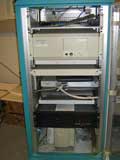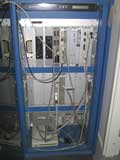|
 |
 |
The seismic station at Kangerlussuaq was installed in 1996 as part of the Global Seismographic Network (GSN) initiative. The GSN encompasses approximately 130 seismic stations around the globe that provide data about earthquakes to the scientific community. The GSN is funded and managed by the Incorporated Research Institutes of Seismology (IRIS), a U.S. based consortium of university research institutes, in partnership with various other local, regional, and global seismic networks. Data from GSN stations is freely available to everyone and is distributed through the IRIS data management center. The GSN network is operated and maintained by two institutions, one of them (responsible among others for this site) is the U.S. Geological Survey Albuquerque Seismological Laboratory. The Kangerlussuaq site, designated SFJ, is a collaborative effort between IRIS, the German network GEOFON (operated by the GeoForschungsZentrum Potsdam), and the Danish Seismological Survey.
In addition, the Kangerlussuaq station is designated as an 'auxiliary seismic' station for the International Monitoring System of the Comprehensive Nuclear-Test-Ban Treaty, an international treaty that prohibits any nuclear (test-)explosions. This auxiliary seismic station provides data to the International Data Center in Vienna.
|

Diana Arachi, USGS
(United States Geological Survey)
Diana.Arachi@ctbto.org
http://earthquake.usgs.gov/research
and
Søren Gregersen, GEUS
(National Geological Survey for Greenland and Denmark)
sg@geus.dk
www.geus.dk
|



